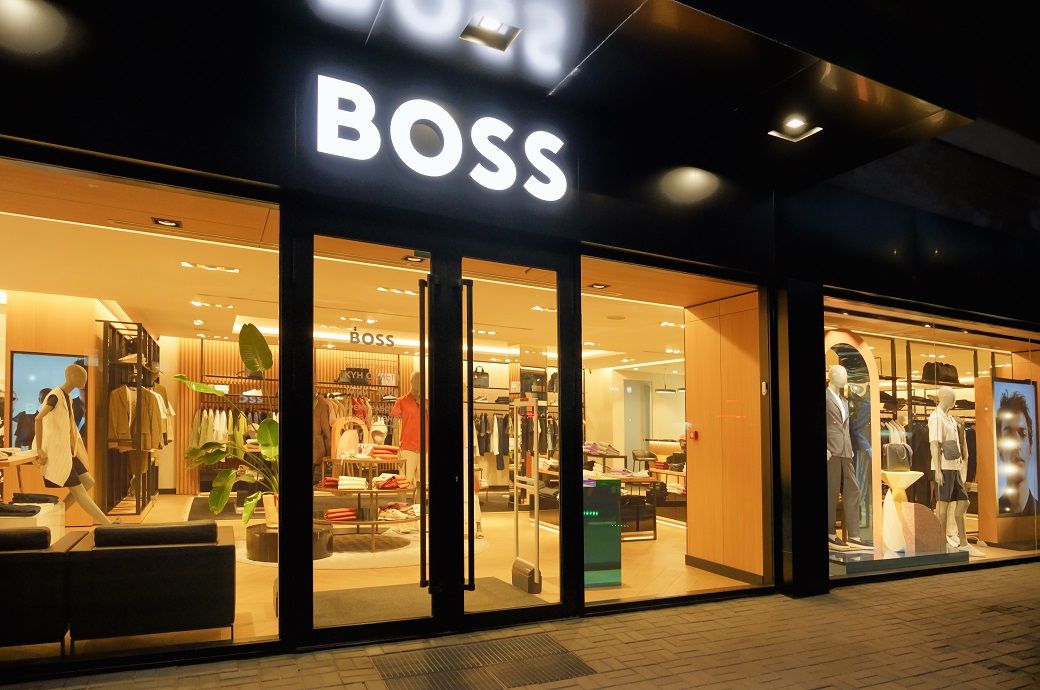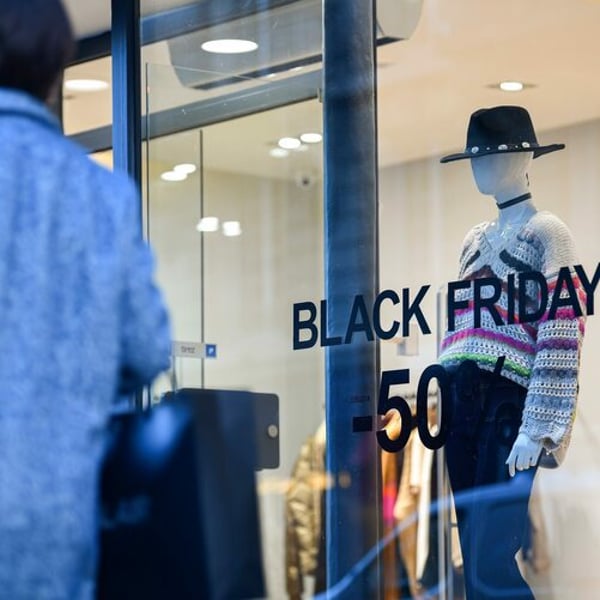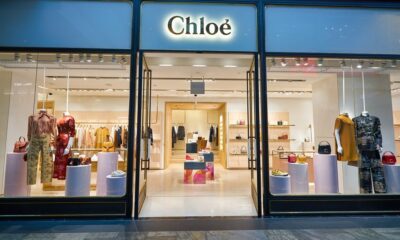Fashion
Germany’s Hugo Boss sees Q2 growth amid volatility, sales hit $1.2 bn

While the reported revenue declined 1 per cent due to adverse currency effects, EBIT jumped 15 per cent to €81 million (~$93.15 million), lifting the EBIT margin by 120 basis points (bps) to 8.1 per cent.
Germany’s Hugo Boss has reported solid Q2 2025 results, with currency-adjusted sales up 1 per cent to €1,002 million (~$1.16 million) and EBIT rising 15 per cent to €81 million (~$93.15 million).
Growth was driven by Boss Menswear and digital sales, offsetting declines in Asia and other segments.
The company reaffirmed its 2025 outlook, projecting sales growth between –2 per cent and +2 per cent.
Brand-wise, Boss Menswear remained the company’s main growth driver, with currency-adjusted sales up 5 per cent. In contrast, Boss Womenswear and Hugo declined by 8 per cent and 12 per cent respectively, as the company undertakes strategic adjustments in these segments.
Regionally, Europe, Middle East, and Africa (EMEA) and the Americas returned to growth with 3 per cent and 2 per cent increases respectively, while the Asia/Pacific region lagged, down 5 per cent, largely due to weak consumer sentiment in China.
The digital business grew by 7 per cent and wholesale by 3 per cent, though brick-and-mortar retail saw a slight 1 per cent dip.
The gross margin held steady at 62.9 per cent in Q2, aided by sourcing efficiencies and improved product costs. Operating expenses declined 3 per cent, reflecting stringent cost discipline across selling, marketing, and administrative functions.
Notably, selling and marketing costs dropped 4 per cent, with marketing investments down 10 per cent YoY in Q2, though largely due to timing shifts.
The net income of the company rose 28 per cent to €50 million (~$57.5 million), with earnings per share (EPS) increasing by 27 per cent to €0.68. Financial expenses declined 27 per cent, benefitting from favourable currency developments.
Trade net working capital (TNWC) remained stable at €839 million, though up 5 per cent currency-adjusted, due to increased inventories and trade receivables. This rise was a strategic move to mitigate tariff uncertainties. The TNWC ratio, based on a four-quarter moving average, improved to 19.7 per cent from 21.2 per cent last year.
“The second quarter (Q2) of 2025 was once again marked by a challenging macroeconomic and industry environment, with global consumer confidence remaining at a low level. Against this backdrop, we delivered solid top and bottom-line improvements, supported by further efficiency gains through our rigorous and sustainable cost discipline,” said Daniel Grieder, chief executive officer (CEO) at Hugo Boss. “Importantly, we remain committed to our long-term ambition of strengthening brand relevance over short-term gains. The successful launch of our Beckham X Boss collection in April is just one example of how we are continuing to drive brand momentum, even in a volatile environment.”
For full year 2025, Hugo Boss is expecting group sales between €4.2 billion and €4.4 billion (–2 per cent to +2 per cent), and EBIT between €380 million and €440 million, marking a projected rise of 5 to 22 per cent. The EBIT margin is forecasted between 9 per cent and 10 per cent.
Sales are anticipated to remain stable in EMEA and the Americas, while Asia/Pacific is expected to witness a moderate decline. Capital expenditure for the year is projected between €200 million and €250 million, lower than €286 million in 2024.
Despite ongoing geopolitical and economic volatility, Hugo Boss aims to drive high-quality growth by executing new brand campaigns and fashion shows in the second half of 2025, reinforcing its global relevance and customer engagement.
“Based on our performance in the first half of 2025, we confirm our full-year outlook for both sales and operating profit. As we enter the second half of the year, our focus remains on exciting consumers, unlocking additional business opportunities and maintaining a consistent focus on high-quality growth. I am particularly excited about our upcoming Fall/Winter 2025 collections and the launch of our new brand campaigns later this month, which are set to further boost brand relevance,” added Grieder.
Fibre2Fashion News Desk (SG)
Fashion
U.S. Black Friday online sales hit record $11.8 billion, Adobe reports

By
Reuters
Published
December 1, 2025
American shoppers spent a record $11.8 billion online on Black Friday, up 9.1% from last year, final data from Adobe Analytics showed.
Adobe Analytics, which tracks over 1 trillion U.S. retail site visits, expects shoppers to spend $5.5 billion on Saturday and $5.9 billion on Sunday, up 3.8% and 5.4% from a year earlier respectively.
Separately, software firm Salesforce reported that American consumers had spent $18 billion on Black Friday purchases, up 3% from a year ago, with luxury apparel and accessories among the most popular categories.
Although U.S. consumers spent more this Black Friday compared to last year, price increases hampered online demand, according to Salesforce, with shoppers purchasing fewer items at checkout compared to last year.
At physical stores, the bargain-chasing was relatively subdued on post-Thanksgiving morning, with some shoppers saying they feared overspending amid persistent inflation, trade policy-driven uncertainty, and a soft labor market.
Cyber Monday, traditionally a big day for online deals, is expected to be the season’s biggest online shopping day again, Adobe projects, driving $14.2 billion in spending, up 6.3% from last year.
© Thomson Reuters 2025 All rights reserved.
Fashion
Mielle becomes NFL’s first textured haircare partner

Published
December 1, 2025
Textured haircare brand Mielle has launched a new partnership with the National Football League, marking the League’s first collaboration with a textured haircare company.
The campaign aims to support the millions of NFL fans with textured hair—women now make up about half of the NFL’s fanbase—while addressing the unique hair challenges faced by athletes wearing helmets, including dryness, breakage and frizz.
The partnership expands Mielle’s growing footprint in professional sports and is designed to boost representation, access to high-quality care, and product innovation for textured-hair athletes and fans.
“The NFL is excited to have Mielle, a brand that is committed to performance, community, and empowering fans and athletes, lean into the NFL partnership” said Tracie Rodburg, SVP global partnerships, NFL.
“This partnership aligns with the league’s mission to build lasting connections within our communities nationwide and celebrate the self-expression of our players and fans.”
The P&G brand says the collaboration gives Mielle a major platform to showcase the performance of its dermatologist-reviewed, Skin Health Alliance–accredited formulas under real athletic conditions.
“We’re honored to be the first textured hair care partner of the NFL through our partnership with P&G,” said Monique Rodriguez, founder and CEO, Mielle. “For so many of us, football represents family and community. It’s attending cookouts, tailgates, reconnecting with family and friends, and showing up in your favorite team colors. And for millions of fans, that includes twisting, braiding, and caring for your textured hair before kickoff.”
The announcement is accompanied by a social-first campaign, including the viral “Passing the Phone” video moment featuring talents across the league from including players, executives and agents, to players’ families and on-air talent.
Copyright © 2025 FashionNetwork.com All rights reserved.
Fashion
India’s logistics push puts fashion in the fast lane

The government’s three-year scorecard backs this up. Since its launch in September ****, ULIP has integrated more than thirty logistics and customs systems and clocked over *.* billion (***+ crore) API transactions as of around August ****, effectively treating data flows like rails. LDB, operational since July ****, has cumulatively tracked over ** million EXIM containers across *** inland container depots (ICDs) by around August ****, turning container visibility from a premium add-on into the default. A Transportation Emissions Measurement Tool (TEMT), developed by IIM Bangalore and partners and endorsed by DPIIT, now gives exporters an ISO-*****-aligned way to report logistics emissions, so freight can sit alongside product footprints in sustainability dossiers.
From Map to Mill Gate: What Gati Shakti Has Actually Changed
-

 Sports1 week ago
Sports1 week agoWATCH: Ronaldo scores spectacular bicycle kick
-

 Entertainment1 week ago
Entertainment1 week agoWelcome to Derry’ episode 5 delivers shocking twist
-

 Politics1 week ago
Politics1 week agoWashington and Kyiv Stress Any Peace Deal Must Fully Respect Ukraine’s Sovereignty
-

 Business1 week ago
Business1 week agoKey economic data and trends that will shape Rachel Reeves’ Budget
-

 Tech6 days ago
Tech6 days agoWake Up—the Best Black Friday Mattress Sales Are Here
-

 Politics1 week ago
Politics1 week ago53,000 Sikhs vote in Ottawa Khalistan Referendum amid Carney-Modi trade talks scrutiny
-

 Fashion1 week ago
Fashion1 week agoCanada’s Lululemon unveils team Canada kit for Milano Cortina 2026
-

 Tech23 hours ago
Tech23 hours agoGet Your Steps In From Your Home Office With This Walking Pad—On Sale This Week


















